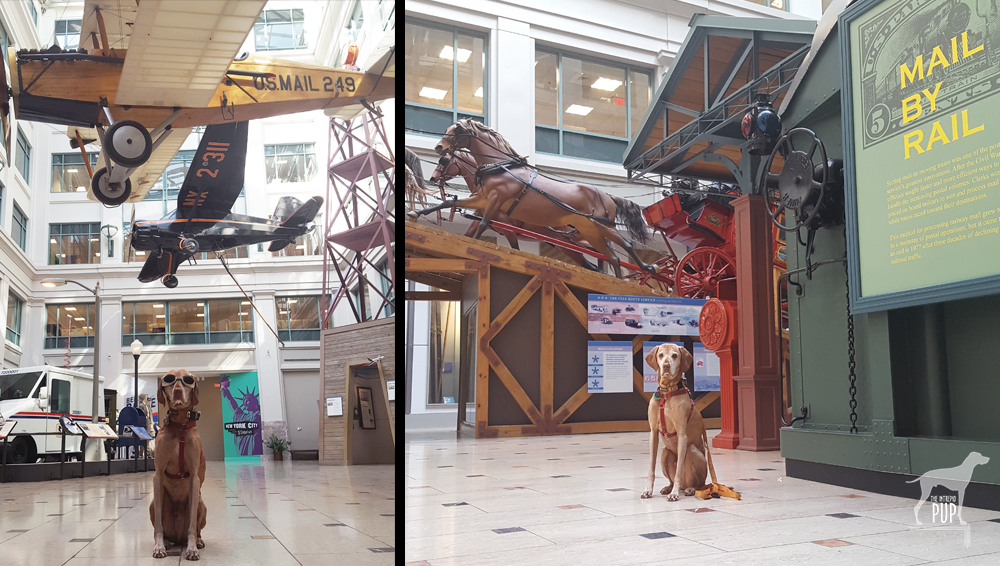
Intrepid Pup Tavish made a treasure-filled visit to the Smithsonian National Postal Museum to encounter a peripatetic, 19th-century celebri-dog named Owney and also to learn a bit of postal history—from the days of Benjamin Franklin to the onset of airmail! Tavish even donned his Doggles® and cultivated an aviator look for posing with the Stinson Reliant and deHaviland DH-4 (on loan to the Postal Museum from the National Air and Space Museum).
Neither snow nor rain nor heat nor gloom of night stayed Intrepid Pup Tavish from the swift completion of his appointed rounds at the Smithsonian’s National Postal Museum. Housed in Washington, DC’s historic City Post Office building, this bastion of all things philatelic and related to postal service history welcomes approximately 400,000 people annually. It’s safe to say that dogs are very much not among the standard visiting public. But, with the goal of viewing and sharing the story of another intrepid pup from the annals of post offices past, Team Tavish was granted special permission to visit. How exciting! So, on a recent Friday morning, we timed our arrival for well before the museum would fill with schoolchildren and tour groups. Tavish was on his best behavior and seemed to know that even though he sees a lot of historical sites, it’s a rare treat to be allowed inside. We were met at a special entrance by a friendly and extremely knowledgeable member of the museum’s staff, processed through security, and ushered into the galleries.
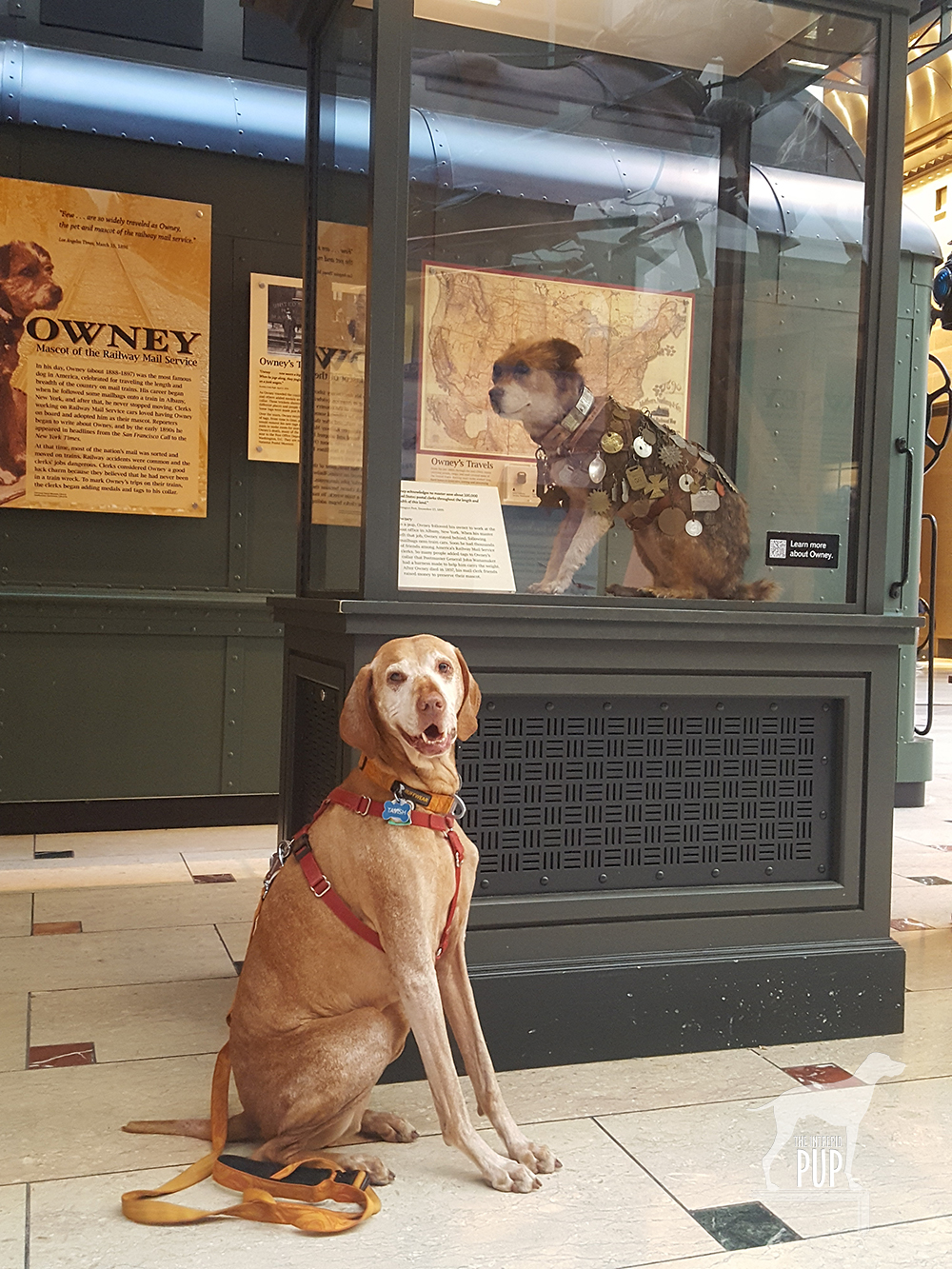
Time Warp: 21st-century Intrepid Pup Tavish meets 19th-century intrepid postal pup Owney.
It was here that we took in one of the highlights of National Postal Museum’s collections: Owney, mascot of the Railway Mail Service (see photo at left). Owney was a mixed breed dog whose escapades began in an Albany, New York, post office around 1888; he was clearly a dog that bucked the caricature of not liking mail carriers! It’s believed that Owney originally belonged to one of the mail clerks, but the dog’s adventurous spirit compelled him to explore first the mail wagons and then the mail trains, and before you knew it, he had logged a lot of miles throughout the United States and Canada. The novelty of Owney happily riding the rails caused a media sensation. Indeed, Owney could be considered one of America’s earliest celebri-dogs. His travels were well-chronicled by journalists of the day, likely fueled by the fact that Owney seemed to be a bit of a good luck talisman in that no Railway Post Office train he rode ever wrecked while he was on board. In 1895 Owney further broadened his horizons with a 132-day, round-the-world trip from Tacoma, Washington. He took mail steamers to the Orient, through the Suez Canal and on to New York City. The final cross-country leg back to Washington state was via train.
Now while Intrepid Pup Tavish has his very own virtual passport denoting his travels, Owney’s “passport” was a tangible (and very heavy!) one in the form of folks attaching to his collar commemorative tags and trade checks (tokens that could be used much like coupons). Owney’s collar quickly got so unwieldy that U.S. Postmaster General John Wanamaker presented Owney with a custom leather harness to better accommodate all his hardware. Even so, postal workers would periodically lighten Owney’s load and send some of his tags back to Albany. The National Postal Museum estimates that Owney collected as many as 1,000 tags during his lifetime!
When Owney died in Toledo, Ohio, in 1897 he was eulogized in many newspapers. At the urging of mail clerks throughout the country, Owney was preserved by taxidermy and presented to the Postal Department headquarters. Even posthumously, Owney continued to travel the country for various exhibitions, including the 1904 World’s Fair in St. Louis. He was eventually donated to the Smithsonian Institution in 1911. A century later, the U.S. Postal Service issued a “Forever” stamp memorializing Owney and several of his tags. As part of the museum’s outreach surrounding Owney, the National Postal Museum has developed a whole suite of online materials, including a free e-book, a map of his travels, an activity guide and educational lesson plans.
It’s hard not to be impressed by Owney’s power to captivate the imagination as well as convey so much about how mail moved about the country in the late 1800s. Tavish then turned his attentions to the rest of the atrium where he was wowed by the Concord-style Mail Coach and the three airmail-related planes overhead. There’s so much more to see at the National Postal Museum: stamp art, philatelic rarities, changing exhibitions. . . you owe it to yourself to pay a visit and get fresh insight on the stamps and mail service you’ve probably always taken for granted. Tell them the Intrepid Pup sent you!
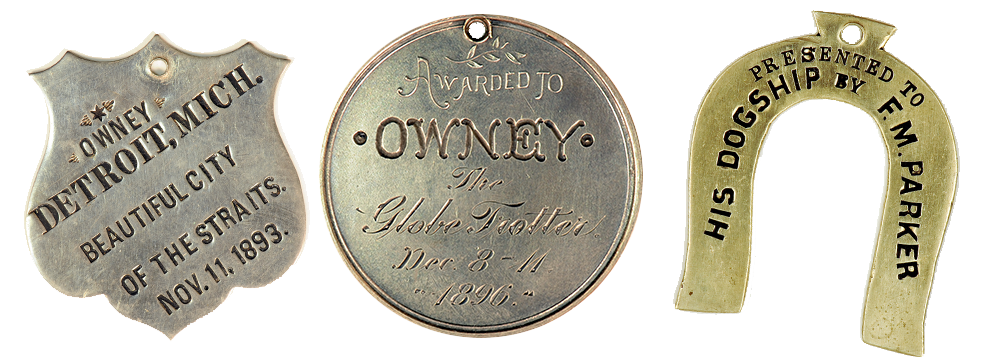
Just a few of the custom tags bestowed upon Owney during nearly a decade of traveling with the mail. Approximately 90 tags can be seen on Owney’s harness. Images courtesy of the National Postal Museum.
Dogging the Details
38°53′51.24″ N, 77°0′29.39″ W
National Postal Museum, Washington, DC
A stamp of approval and a “1” on the Intrepid Pup wag-a-meter—the National Postal Museum really delivers! It’s relatively easy to get to by multiple means of transportation. It’s Metro-accessible, plus (unlike its sister Smithsonian museums on the National Mall), nearby street parking and all-day paid garage parking at Union Station next door are ample and convenient. The museum is open 364 days a year and has free admission. While entering the museum with your dog is not an option (unless it’s a service animal), this museum has lots to offer in a space where it’s manageable to see it all without having museum fatigue set in.
Should you wish to extend your postal-themed adventures and bring a dog with you, here are a couple options:
38° 52′ 53.11″N, 77° 2′ 36.40″ W
Airmail marker, Washington, DCIf you’re up for a walk in the park and specifically Washington, DC’s National Mall and Memorial Parks, check out this little-known marker on Ohio Drive in West Potomac Park, bordering the Potomac River. Across from the present-day ball field is the spot where on May 15, 1918, the world’s first airplane mail started as a continuously scheduled public service. The 230-mile route accommodated transportation of 150 pounds of mail from Washington, DC to New York City via Philadelphia aboard a Curtiss JN 4-H airplane in approximately three hours.
“B. Free”! Tavish channels postal history giant Benjamin Franklin in both Washington, DC (above) and Philadelphia (at right).
39° 57′ 0.15″N, 75° 8′ 47.67″ W
B. Free Franklin Post Office and the Franklin Court Complex, Philadephia, PennsylvaniaAs Intrepid Pup Tavish was departing from his specially-arranged visit to Washington, DC’s National Postal Museum, he spied a statue (see photo at left) of Benjamin Franklin in the lower level foyer. Franklin is essentially the “patron saint” of the postal service in America. He started out as the British Crown Post-appointed postmaster in Philadelphia in 1737 with responsibility for surveying post offices and post roads. In 1775, the Continental Congress made Franklin the first Postmaster General with oversight over all post offices from Massachusetts to Georgia.
To be “frank,” seeing Franklin jogged Team Tavish’s memory about visiting the B. Free Franklin Post Office in Philadelphia a few years ago, and you can visit it, too (see photo at right)! This fully operational U.S. Post Office branch is open Monday through Saturday and is within the National Park Service’s Franklin Court Complex (part of Independence National Historical Park) that includes the Franklin Museum, a museum shop, and the Franklin Court Printing Office and Bindery. The B. Free branch is a colonially-themed post office and the only one in the United States that doesn’t fly a U.S. flag—because there was no United States yet when Franklin was serving as its postmaster. You can still get your letters stamped here with “B Free Franklin,” which was Franklin’s not-so-subtle way of signing a letter in support of American independence from England.


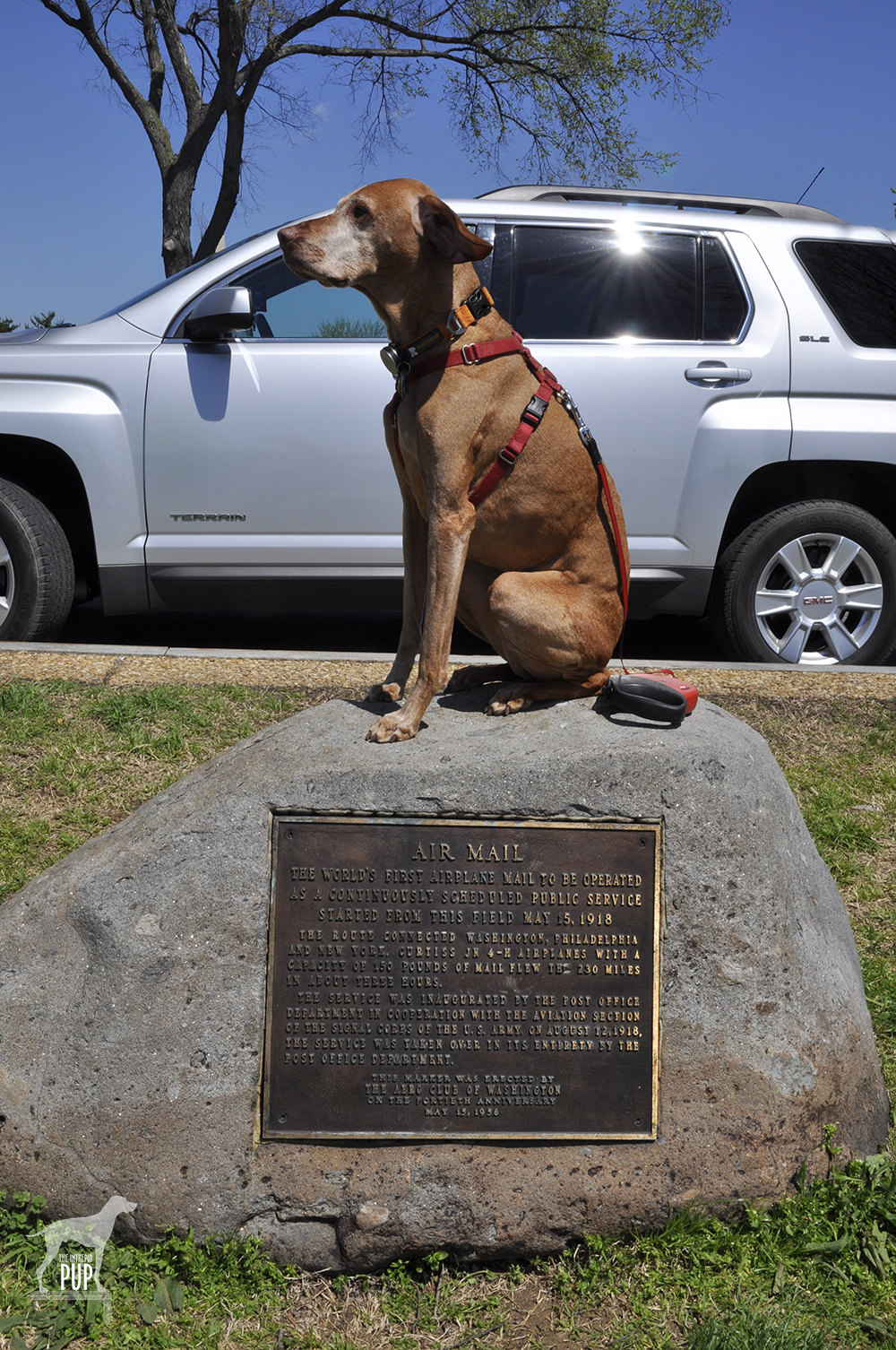
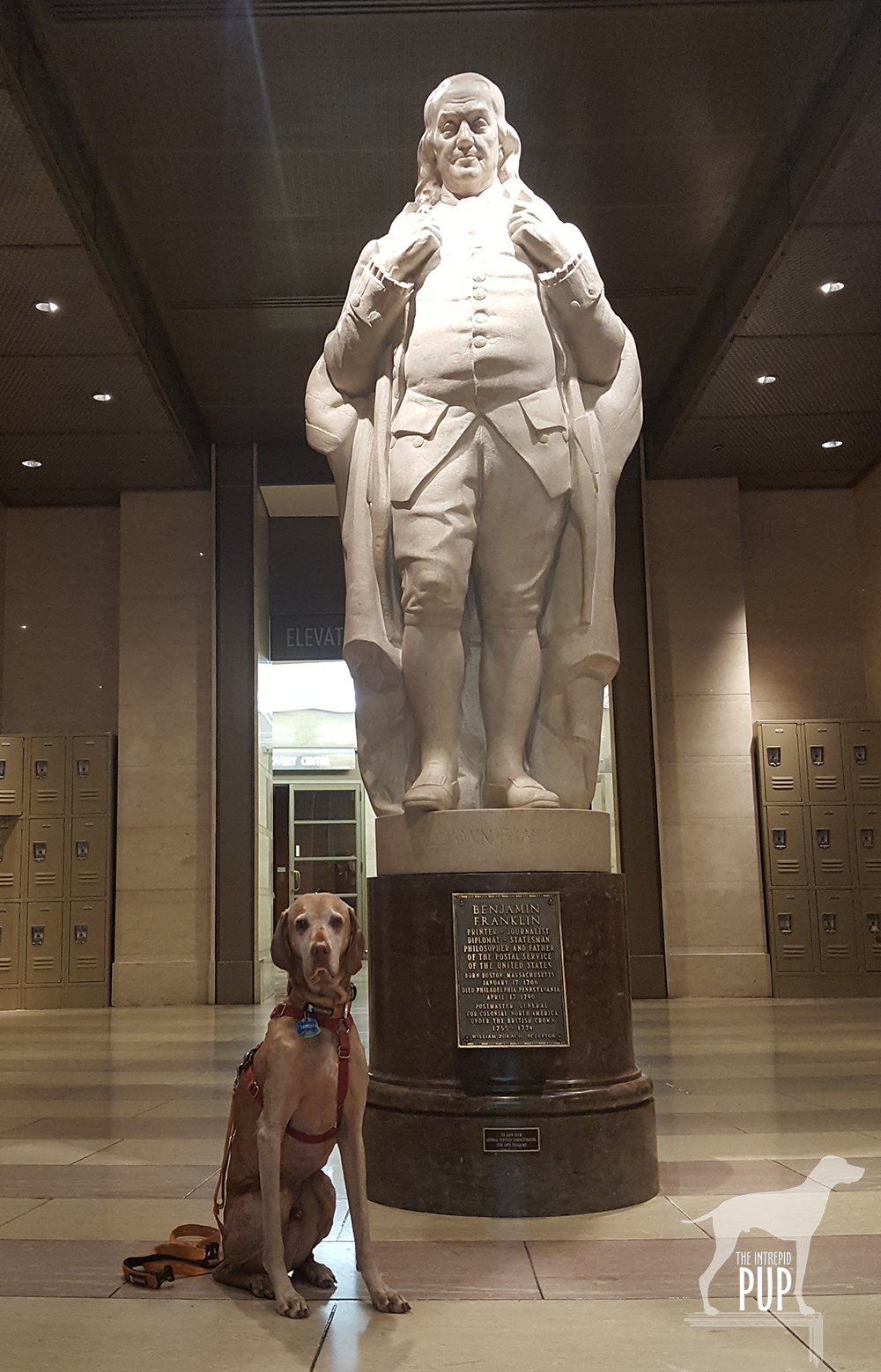
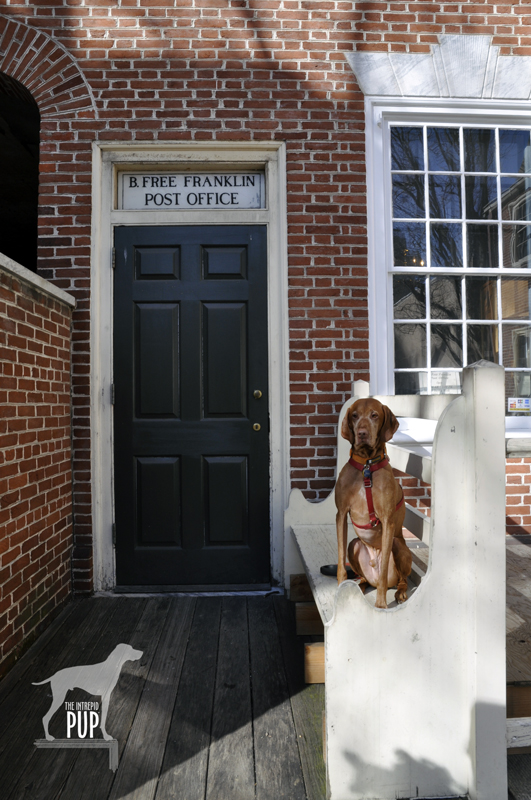


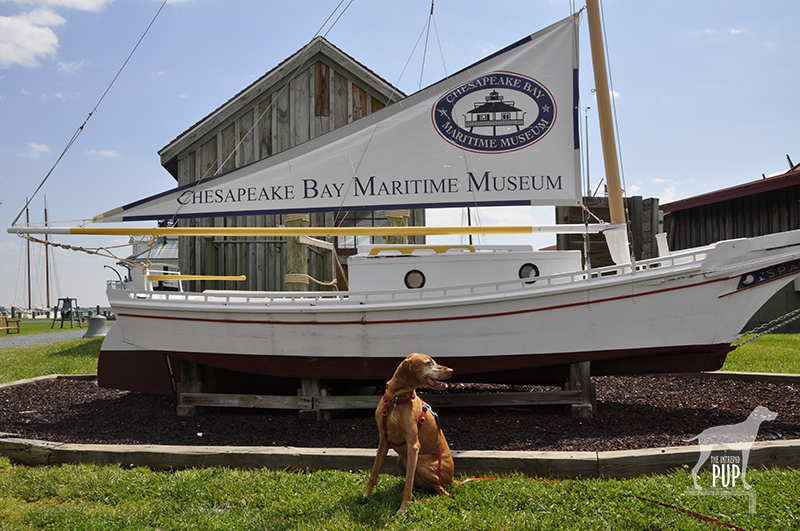
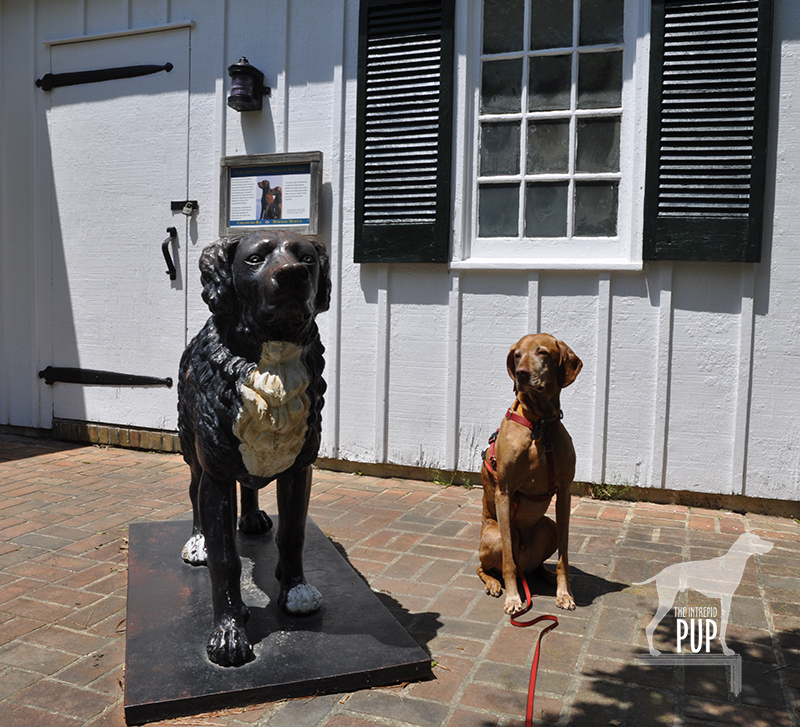
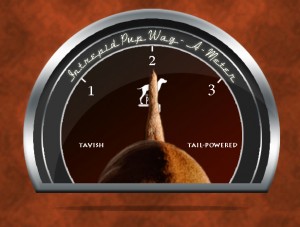
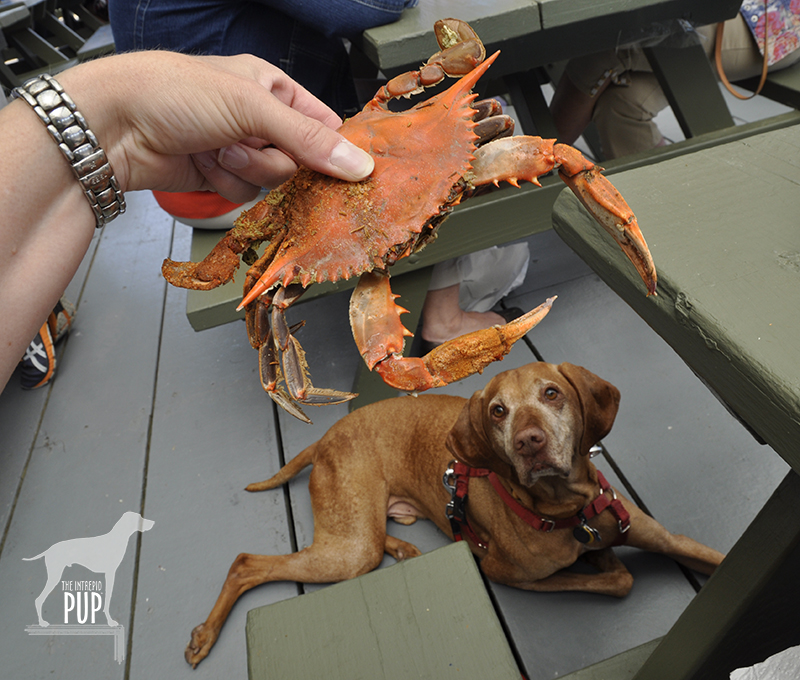
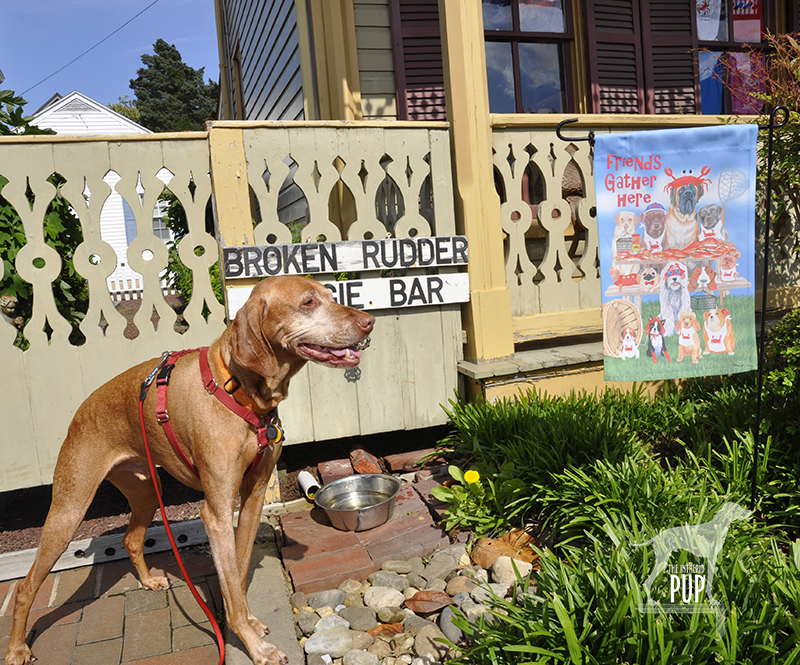
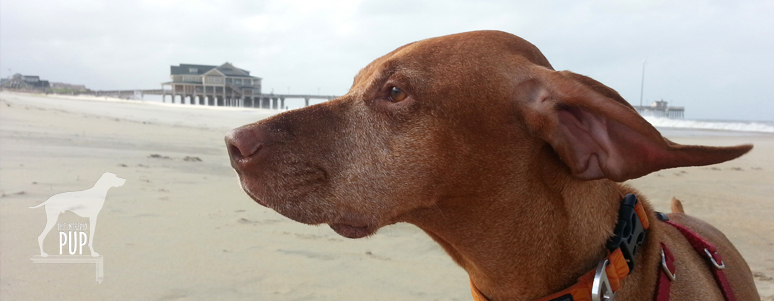
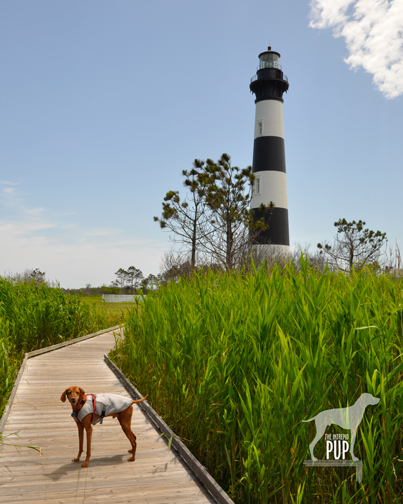
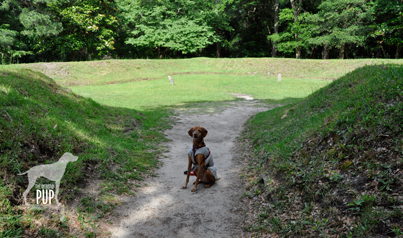
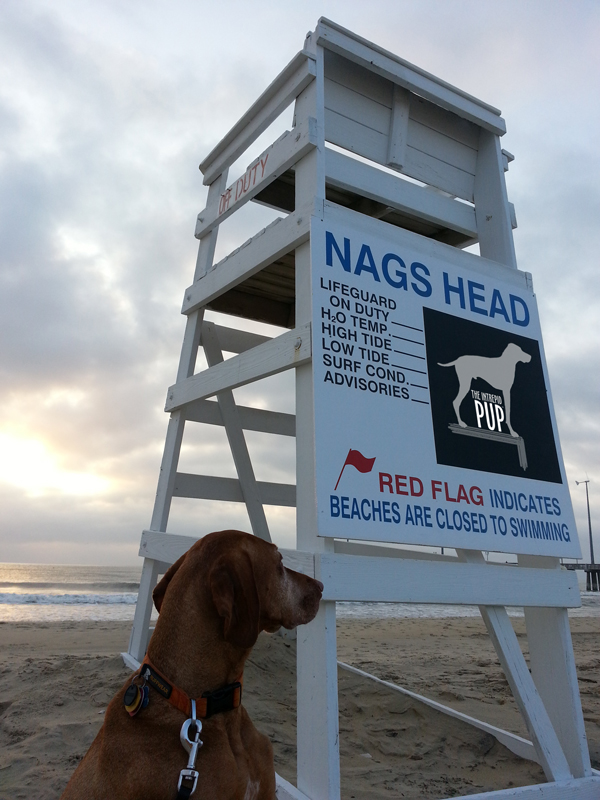
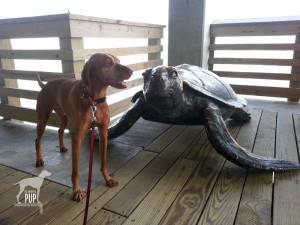
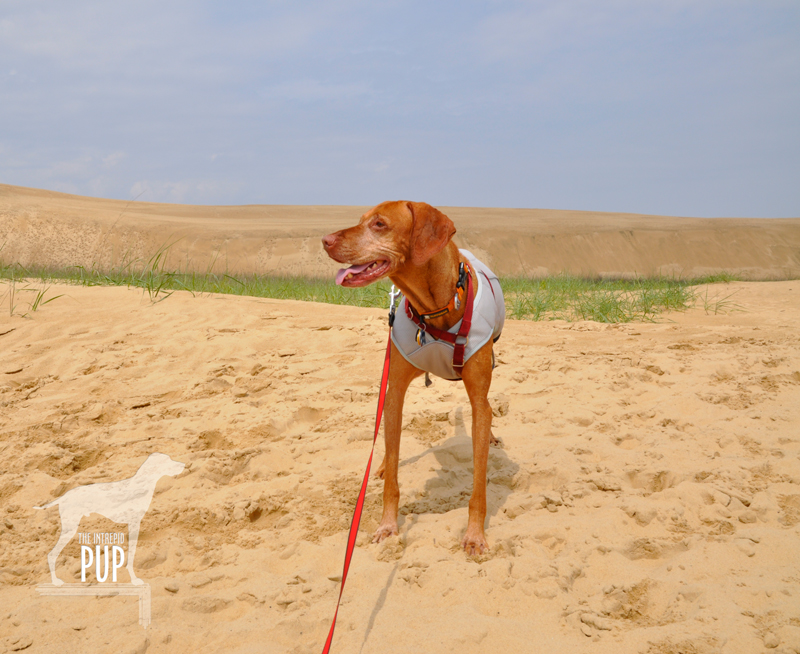
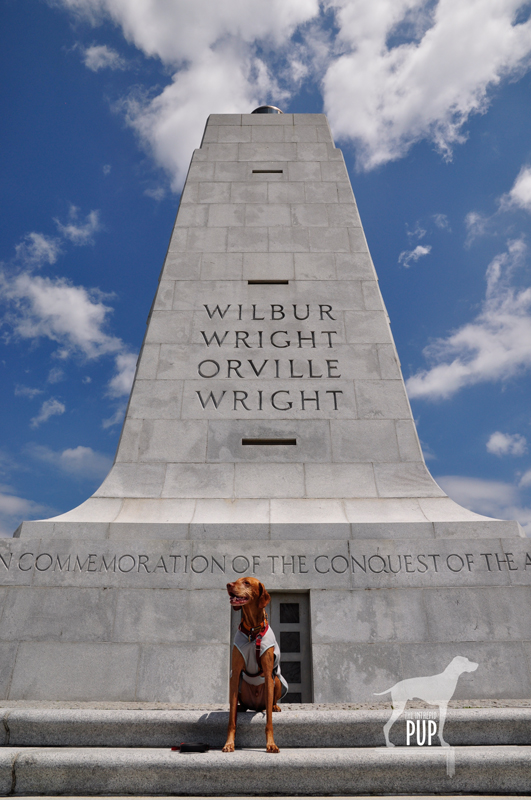
 You see a lot of dogs on the Outer Banks enjoying outdoor activities a-plenty. So at first we were puzzled by the fact that dog-friendly lodging and dining weren’t as abundant. It turns out that many dog-owning OBX vacationers rent beach houses by the week (Sunday to Saturday) so they’re not needing as many hotels and always have the option of cooking in. That being said, there are approximately a dozen pet-friendly overnight accommodations. We stayed at the
You see a lot of dogs on the Outer Banks enjoying outdoor activities a-plenty. So at first we were puzzled by the fact that dog-friendly lodging and dining weren’t as abundant. It turns out that many dog-owning OBX vacationers rent beach houses by the week (Sunday to Saturday) so they’re not needing as many hotels and always have the option of cooking in. That being said, there are approximately a dozen pet-friendly overnight accommodations. We stayed at the 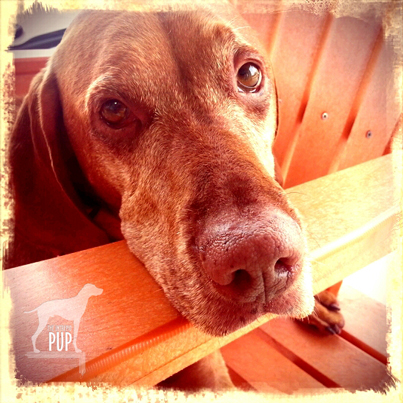
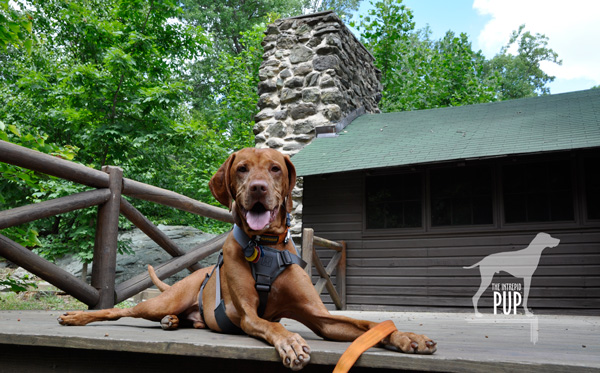
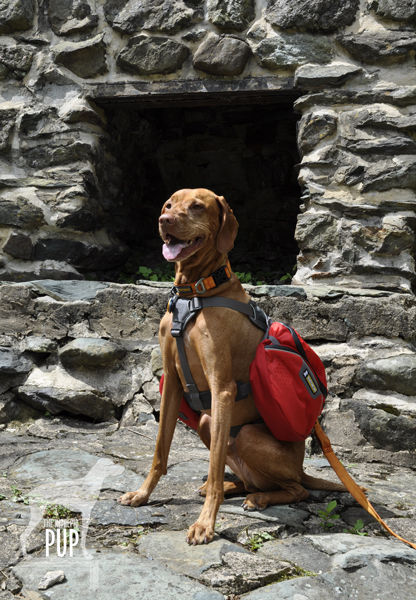
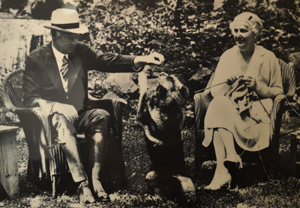
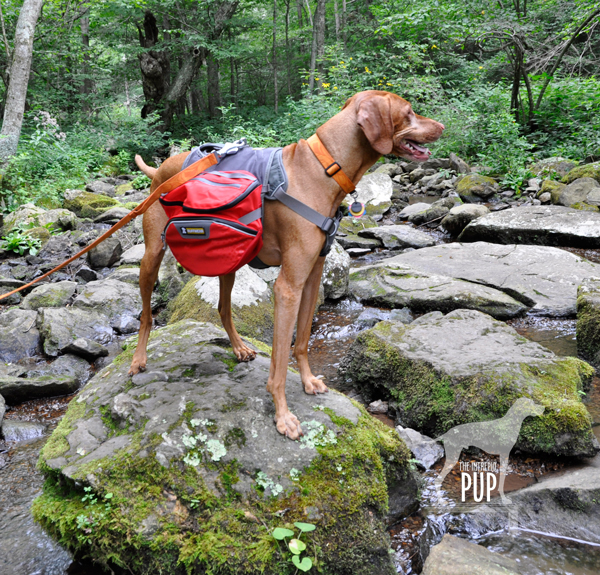
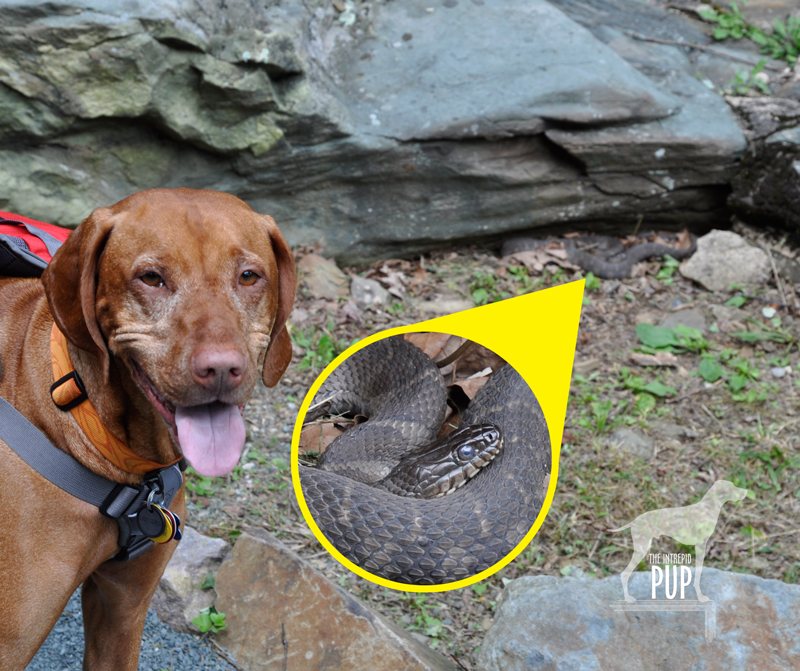
 Yonder’s
Yonder’s 









 Just in time for Presidents’ Day is this week’s
Just in time for Presidents’ Day is this week’s  to U.S. president Gerald Ford from Ford’s daughter and the White House photographer.
to U.S. president Gerald Ford from Ford’s daughter and the White House photographer.
